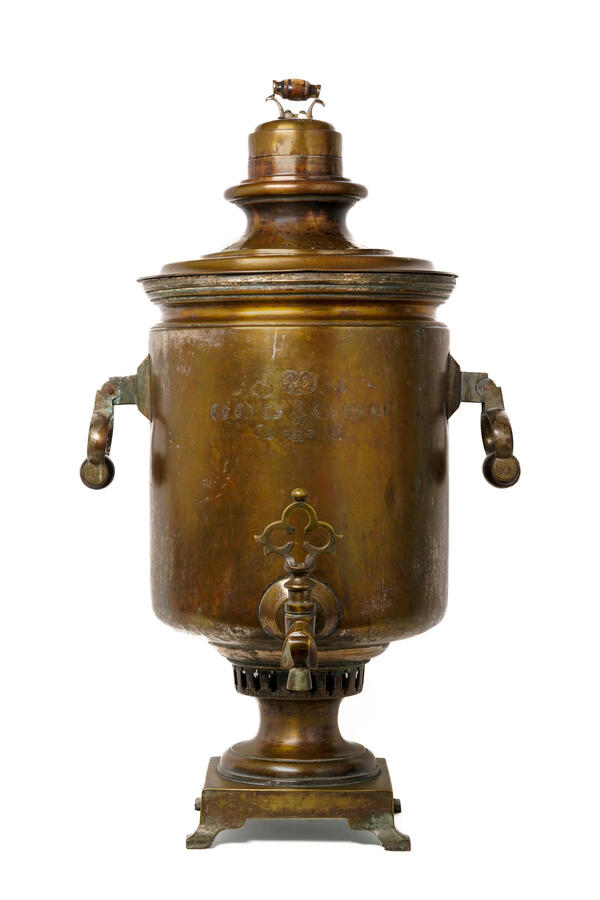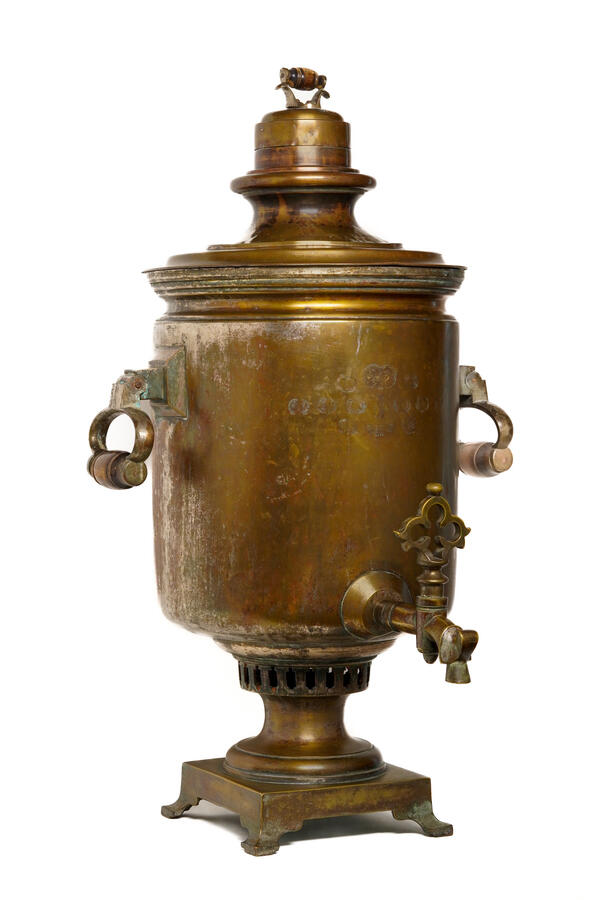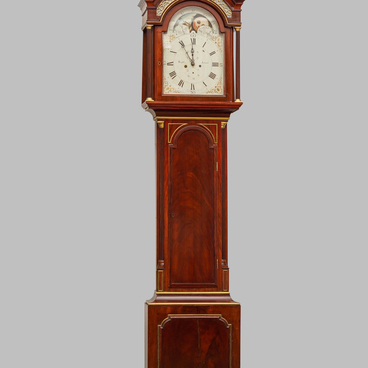The samovar is an integral part of the life and destiny of the Russian people. Coachmen and merchants used to warm themselves with tea from the samovar. At all times the samovar was a dear friend to peasants who were refreshed and comforted by drinking tea. The samovar was so close to people that it is mentioned in proverbs and sayings and in literary works of Pushkin, Blok, Gogol and Gorky.
Samovar-like devices have been known since prehistoric times and ancient Rome. A similar ancient device also exists in China. A deep bowl with an incorporated chimney and an ash drawer is the famous Chinese prototype of the samovar, called a “ho-go”. They can be made of metal or porcelain, and are usually served with soup or simmering broth. It is very likely that the ho-go came to Russia from China in the 16th century along with tea.
In Russia, samovars quickly became fashionable because of the harsh climate: not only did they provide boiling water, but also helped to heat the home. Despite the high cost, even poor people bought them. The price of a samovar often depended on its weight: the heavier the vessel, the more expensive it was. Samovar making was a rather labor-intensive process. At different times they were made of different metals: the first items were copper or melchior, later brass ones appeared. Usually inside the samovar there were partitions which divided it into two parts: one of them was used for cooking food, and the other was used for boiling water used for tea. In the Russian Empire, samovars were made at large smelting factories in the Urals and Moscow. It was not in Tula that they were made for the first time, but in the Urals: a 16-pound copper samovar is mentioned in the preserved documents dated to the 1740s. The first mention of the Tula samovar was registered only six years later. It is known that at the end of the 19th century there were about 80 factories in Tula, which were engaged in manufacturing samovars.
The names of the owners of the samovar factories were known not only in Russia, but also beyond its borders. One of them was Meyer Iosifovich Sliozberg. The products of his factory can be seen in the Museum-Reserve “Kolomna Kremlin”. The Sliozberg factory started producing samovars in 1904 and operated until 1917. Today the antique samovars with the marking of the Meyer Sliozberg commercial and industrial partnership are in great demand. Thanks to their quality and manual tinning, they are still in use today.
Samovar-like devices have been known since prehistoric times and ancient Rome. A similar ancient device also exists in China. A deep bowl with an incorporated chimney and an ash drawer is the famous Chinese prototype of the samovar, called a “ho-go”. They can be made of metal or porcelain, and are usually served with soup or simmering broth. It is very likely that the ho-go came to Russia from China in the 16th century along with tea.
In Russia, samovars quickly became fashionable because of the harsh climate: not only did they provide boiling water, but also helped to heat the home. Despite the high cost, even poor people bought them. The price of a samovar often depended on its weight: the heavier the vessel, the more expensive it was. Samovar making was a rather labor-intensive process. At different times they were made of different metals: the first items were copper or melchior, later brass ones appeared. Usually inside the samovar there were partitions which divided it into two parts: one of them was used for cooking food, and the other was used for boiling water used for tea. In the Russian Empire, samovars were made at large smelting factories in the Urals and Moscow. It was not in Tula that they were made for the first time, but in the Urals: a 16-pound copper samovar is mentioned in the preserved documents dated to the 1740s. The first mention of the Tula samovar was registered only six years later. It is known that at the end of the 19th century there were about 80 factories in Tula, which were engaged in manufacturing samovars.
The names of the owners of the samovar factories were known not only in Russia, but also beyond its borders. One of them was Meyer Iosifovich Sliozberg. The products of his factory can be seen in the Museum-Reserve “Kolomna Kremlin”. The Sliozberg factory started producing samovars in 1904 and operated until 1917. Today the antique samovars with the marking of the Meyer Sliozberg commercial and industrial partnership are in great demand. Thanks to their quality and manual tinning, they are still in use today.





